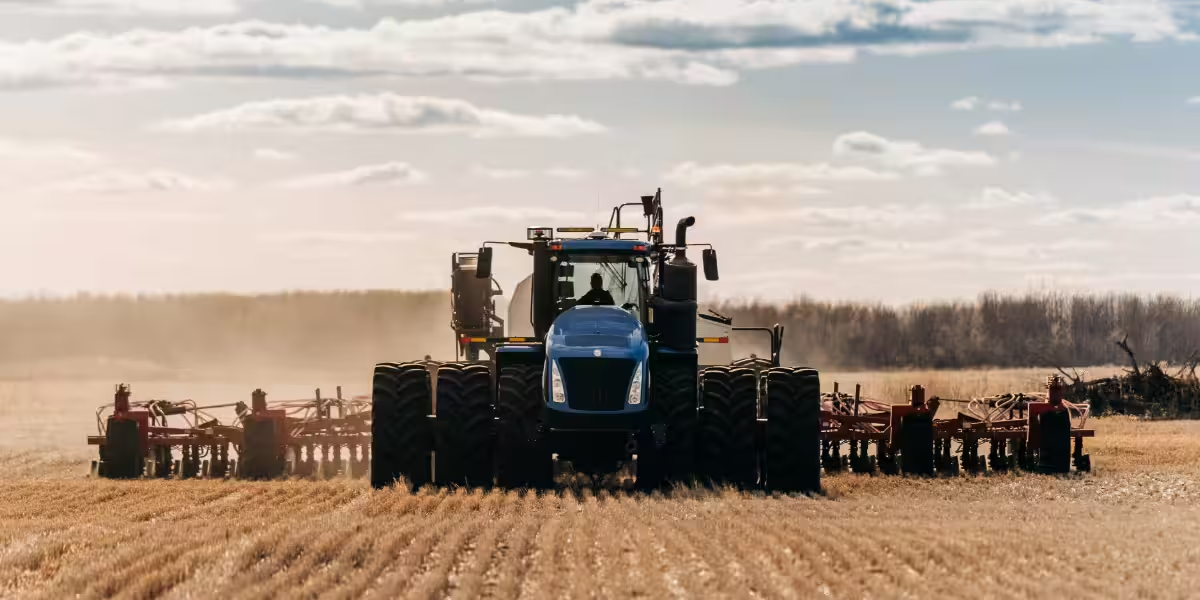
Harvest Season Safety Considerations for Drivers in the Midwest: Staying Safe on the Roads This Fall
At Kendall Law Group, LLC, we are Kansas City’s catastrophic auto accident injury attorneys who understand how dangerous the roads can become during the harvest season. As dedicated advocates for individuals injured in serious accidents, we see firsthand the devastating impact that collisions involving farm equipment, oversized loads, and unpredictable weather can have on drivers and their families. This is why we care so deeply about promoting safety during one of the busiest times of the year for both commuters and farmers.
For those commuting through rural areas and the hardworking farmers striving to get their crops to market, harvest season presents a unique set of challenges. Increased farm machinery on the roads, unpredictable weather, and shorter daylight hours all contribute to the heightened risk of accidents. Our goal is to provide practical safety advice for both drivers and farmers to help everyone stay safe and avoid the types of serious accidents we deal with every day in our practice.
Whether you are driving through the rural areas surrounding Kansas City or working long hours in the fields, it’s important to be aware of the specific risks that come with harvest season and how to mitigate them. By staying informed and taking extra precautions, we can all help reduce the likelihood of catastrophic accidents this fall.
Increased Presence of Farm Equipment on Rural Roads
During the harvest season, the most notable change on rural roads is the rise in slow-moving agricultural vehicles, such as tractors, combines, and grain trucks. These large machines are essential for the harvest but can pose serious hazards to drivers unfamiliar with their operation.
Key Considerations:
- Slow-Moving Vehicles: Most farm machinery operates between 15 and 25 mph, significantly slower than the average vehicle speed on rural highways.
- Wide and Oversized Loads: Some equipment, such as combines and grain trailers, may extend into other lanes, creating an obstacle for oncoming traffic.
- Limited Visibility: Large agricultural vehicles often have restricted visibility, especially when towing implements, which increases the risk of accidents.
Practical Tips:
- Slow Down: Always reduce your speed when approaching farm equipment and avoid tailgating.
- Keep Your Distance: Maintain a safe following distance, and only pass when it is both safe and legal to do so.
- Watch for Bridge Restrictions: Oversized loads may have difficulty crossing narrow or weight-limited bridges.
Shorter Days and Limited Visibility
The fall season brings shorter days, with dusk arriving earlier and dawn breaking later. Reduced daylight hours, combined with the fact that farm operations often extend into early mornings or late evenings, mean that more vehicles are on the road during low-light conditions.
Key Considerations:
- Glare from the Sun: Early morning and late afternoon can bring significant glare from the sun, which makes it harder to see other vehicles and equipment.
- Reduced Reaction Time: Limited visibility impairs depth perception and reaction times, making it crucial for drivers to stay alert.
Practical Tips:
- Use Your Headlights: Turn on your headlights during twilight hours to ensure you’re visible to other drivers and farm equipment operators.
- Increase Following Distance: Give yourself more room to react by maintaining a greater distance from the vehicle in front.
- Anticipate Glare: Keep a pair of sunglasses handy and be mindful that glare may affect others on the road even if it isn’t bothering you.
Unpredictable Weather Conditions
Midwestern fall weather can be unpredictable, with sudden rain, fog, and even early snowfall creating hazardous road conditions. Wet leaves can also reduce traction, creating a slippery surface much like ice.
Key Considerations:
- Slippery Roads: Rain, snow, and wet leaves can make roads slick, especially in rural areas where maintenance may be sporadic.
- Fog: Dense fog is common in the fall, reducing visibility and making it harder to see farm machinery or other vehicles.
- Strong Winds: Winds can blow debris onto roads, creating hazards or causing visibility issues.
Practical Tips:
- Reduce Speed: Drive slower during rain or fog, and be cautious of wet leaves on the pavement.
- Use Fog Lights: If equipped, use fog lights during foggy conditions to improve visibility.
- Watch for Road Debris: Be prepared for sudden debris on the road due to strong winds or farming activities.
Farm Vehicles Entering and Exiting Roads
Agricultural equipment frequently enters and exits fields directly onto rural roads. These movements can be unpredictable, and drivers may not have much warning before a farm vehicle appears in front of them.
Key Considerations:
- Unpredictable Movements: Farm machinery may suddenly enter the road from a field, often without designated entry points.
- Lane Crossing: In some cases, farm vehicles need to cross traffic lanes to access fields, posing a risk to oncoming traffic.
Practical Tips:
- Stay Alert: Always be on the lookout for vehicles entering or exiting fields, especially on rural highways.
- Expect Sudden Stops: Be prepared for farm vehicles to stop or turn abruptly.
Increased Traffic from Hauling Operations
During harvest season, there is a significant increase in semi-trucks and trailers hauling crops. These trucks are often heavily loaded, meaning they take longer to stop and have slower acceleration.
Key Considerations:
- Longer Stopping Distances: Heavily loaded trucks need more time to stop, making tailgating dangerous.
- Slow Acceleration: Trucks may take longer to accelerate after stopping, which can cause delays for other drivers.
Practical Tips:
- Don’t Cut In: Avoid cutting in front of a truck, as they require more distance to stop safely.
- Stay Out of Blind Spots: Trucks have larger blind spots, so ensure you’re visible at all times.
- Pass Safely: When passing a truck, make sure you have ample room before merging back into their lane.
Oversized Loads and Bridge Safety
Oversized farm equipment is common during the harvest season, and this can present challenges when navigating narrow rural bridges.
Key Considerations:
- Narrow Bridges: Many rural bridges may not accommodate both a standard vehicle and an oversized load at the same time.
- Weight Limits: Some bridges may not be able to handle the weight of large farm equipment.
Practical Tips:
- Wait for Safe Crossing: If you see an oversized load approaching a narrow bridge, wait for it to cross before attempting to pass.
- Heed Weight Limit Signs: Pay attention to posted weight and width limits before crossing any bridges.
Kansas City Auto Accident Injury Trial Lawyers
The Midwest harvest season requires extra caution from all drivers. With more farm machinery on the roads, unpredictable weather conditions, and increased traffic, it’s essential to stay alert and patient. By adjusting your driving habits and taking the necessary precautions, you can help ensure a safe journey for everyone on the road this fall.
If you or your loved one is seriously injured or killed in a harvest season auto accident, our team of skilled trial attorneys is here to help. With over 30 years of experience helping individuals and families put their lives back together after disaster strikes, we will leave no stone unturned in the pursuit of the compensation you deserve. Contact us at (816) 531-3100 for a free consultation or reach out HERE.
Additional Resources
What to Do After An Auto Accident
How to Choose the Right Attorney for Your Catastrophic Injury Case in Kansas City






